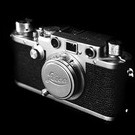Telescope Camera Mount
-
Recently Browsing 0 members
- No registered users viewing this page.
-
Similar Content
-
- 2,528 replies
- 194,695 views
-
- 328 replies
- 45,199 views
-
- 18 replies
- 832 views
-
Mount Fuji
By benqui,
- 7 replies
- 406 views
-
- 45 replies
- 2,570 views
-


.thumb.jpg.a8c0eceb5c93f775e75e8b4465e4cf9c.jpg)

Recommended Posts
Join the conversation
You can post now and register later. If you have an account, sign in now to post with your account.
Note: Your post will require moderator approval before it will be visible.